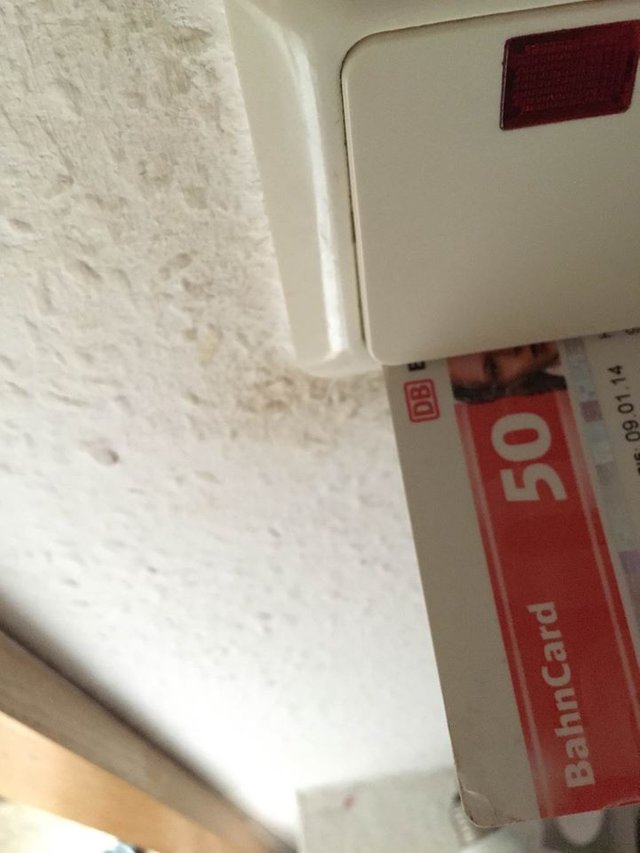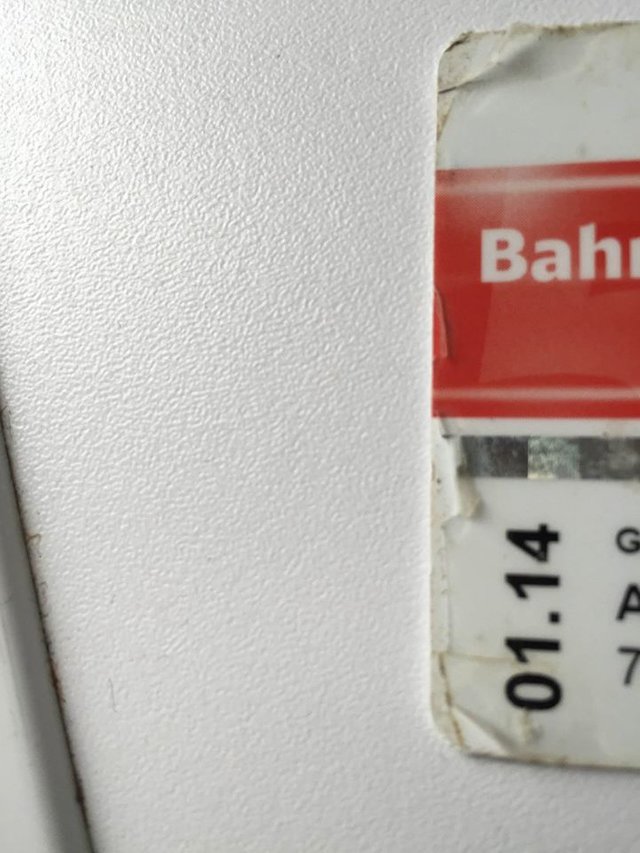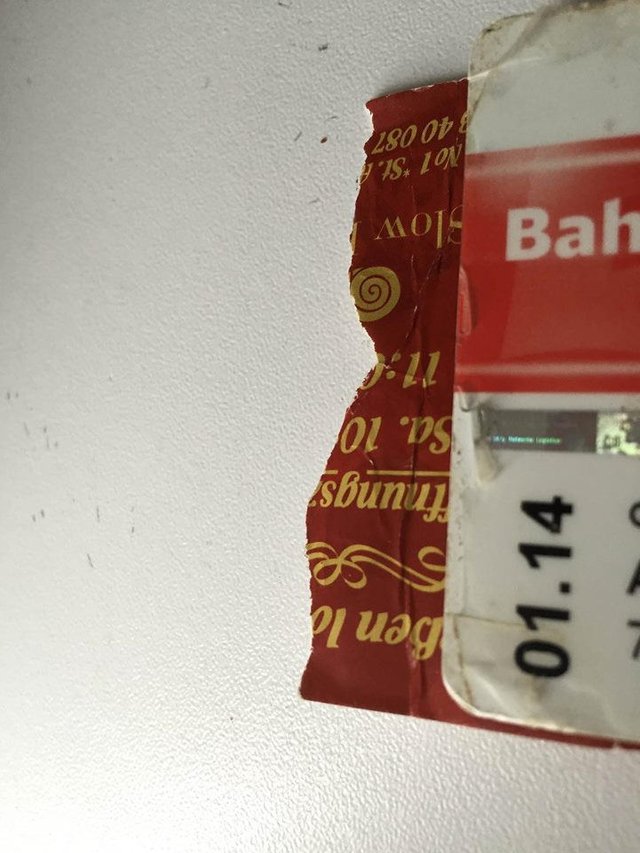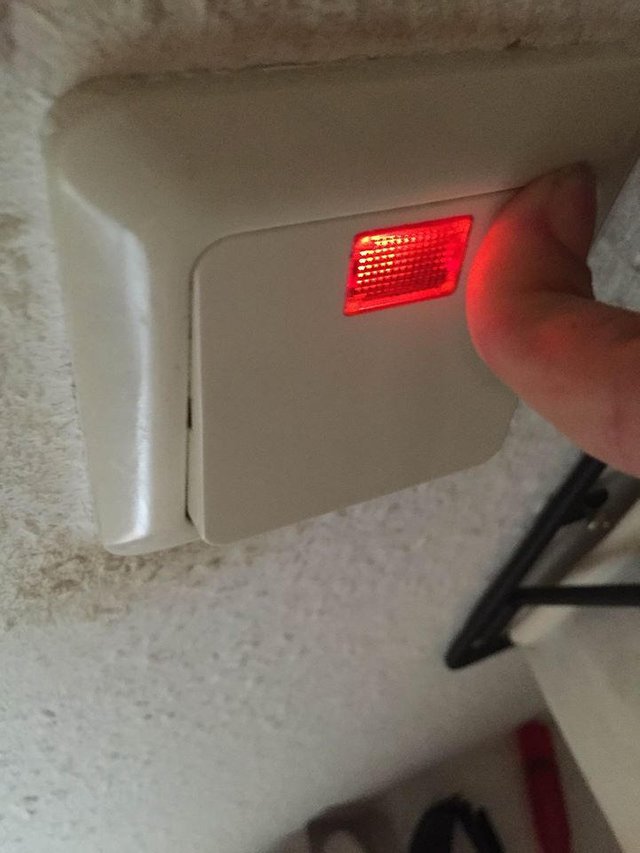The German Railway Card, Electricity & Occam's Razor...... (A mildly humorous Read)

Since April of 2015 I have been living half the year in Germany. They do things differently here. Things can be logical to the point of confusion but over all life is very well organised, things generally work, and (coming from Asia) I tend to feel that in Germany they build things to last. Sure there are things I may never understand about this country, but most of the time, a little bit of applied logic will solve most mysteries. Or so I thought. You see... Over the last year I have been contemplating a very peculiar aspect of Germanity. (See picture above.)
AS you can see, there is a Railcard inserted into the electrical switch. In a part of the world where countries have coin operated heating systems, and coin operated laundromats, communal car and bike sharing systems, my conclusion at the time was that this was some sort of card based pre or post paid energy system.
After several days of inserting the card in order to turn on the light in the bathroom, my conclusion was further refined to include the magnetic strip on the card. The system, in my estimation, was based on the magnetic strip of the Railcard coming into contact with a kind of measuring/transmitting/receiving device located inside the light switch. Please note, that this Railcard, is an official card frequently used in Germany.
AUGUST (FOUR MONTHS LATER)
By the time August rolled around, the insertion of the card was not quite as easy. The card was clearly falling apart and merely inserting the card into the light switch was no longer working. It took a great deal of effort to get the magnetic strip to maintain contact with the mechanism inside the light switch. This was the mechanism which was either measuring the amount of energy used, or it was the means by which this bathroom card was transmitting or receiving billing information that was relevant to the energy company.
In the picture below you will see that the Railcard is inserted but the light in the light switch has failed to light up.

Now of course, it was obvious to me that the current state of the card, (see below) was causing this instability. The edges where the magnetic strip was coming into contact with the measuring/transmitting/receiving device were decaying, so naturally, the connection was becoming less stable.

Since the magnetic strip was facing upward, I further concluded that the measuring/transmitting/receiving mechanism was on the underside of the flip switch. In order to resolve the lack of contact, I felt that adding a wedge under the card would temporarily fix the problem, and the electrical supply to the bathroom, would once more, be stable. I opted for a simple solution, which worked surprisingly well.
A thick piece of paper inserted under the Railcard enabled the magnetic strip to maintain contact with the measuring/transmitting/receiving device inside the switch. For weeks, this was the method that was used to maintain a stable connection. As you can see from the image below, the addition of the paper card provided enough extra pressure from beneath the card, such that the magnetic strip was able to maintain constant contact with the measuring/transmitting/receiving device. Problem Solved. (see below)

NOVEMBER (THREE MONTHS LATER)
Interestingly enough, over the weeks and months I discovered a few other things about this unique system.
Firstly, the Railcard was solely responsible for the bathroom, as other switches in the apartment worked whether the Railcard was connecting or not. Secondly, (and this revelation was quite recent) the hot water also worked whether the Railcard was connected or not. My explanation for this was that, the other switches, as well as the hot water supply, were on separate circuits. This meant that the Railcard was either solely responsible for the electrical supply IN the bathroom, OR that the main circuit was collecting usage data from all the other circuits via the combination of the magnetic strip and the measuring/transmitting/receiving device located inside the bathroom light switch.
I went with the second explanation, as it seemed strange that the electrical company would only need data from the bathroom. And..... Of course, it was quite natural for me to assume that the bathroom switch was a master switch of some sort as it was the only switch in the apartment which had a red light on it. As we know, red lights, and magnetic strips on official cards, are usually indications that something critical is going on.
Please note that, the explanation above was something I mulled over on a daily basis. With each successful usage of the Railcard/bathroom switch device my convictions only grew stronger. In Germany, the Railcard is somehow necessary and critical to the supply or measurement of energy in various households.
I noted to myself that my friends apartment in Berlin did not require a bathroom Railcard. This seemed to make sense as his apartment is located in an older building and this system may not have been in use when that building was built. I also noted that stand alone houses must have their Railcard switch located elsewhere as I failed to see any obvious ones in the two other houses I visited, and of course at restaurants and bars and such there’s probably some other measuring/transmitting/receiving device in use.
It was only VERY recently that I made an even stranger discovery. The Railcard fell out of the switch while the washing machine was in use and yet the machine, located in the bathroom, did not stop working. It’s not uncommon for electrical devices that consume larger amounts of energy to be on their own circuits and so, my conclusion was that the washing machine, was also on it’s own circuit, feeding into the general Railcard measuring/transmitting/receiving system.
Yesterday, things came to an interesting head.
Firstly, I got a very strange look from my boyfriend (owner of the Railcard in question) when I asked him, if the it was the degenerative state of his Railcard that was causing the instability of the magnetic strip connection to the light switch.
He said, “No”.
As we were rushing out at the time, I did not have a chance to consider this new piece of information.
Can you fix the switch?
That evening things really took a turn for the strange when he asked me at the supermarket if I could replace the old switch with a new one. While it was a severe blow to my ego relating to my innate ability to resolve almost all basic home repair issues, I felt I had to decline. Seeing as I had no knowledge of how the magnetic strip and the measuring/transmitting/receiving device worked, the switch replacement seemed beyond my DIY abilities.
I believe, it was at that moment, that a sense of confusion set in. He, could not understand why I was continually referring to the magnetic strip, and I could not for the life of me figure out why he thought that I would be able to change a switch that would in all probability, need some sort of professional attention since it was directly connected via the Railcard to the electrical company.
Some hours later, after returning to the apartment, my suspicions regarding the state of the Railcard being the cause of the light switches instability peaked. Roughly seven whole months into my convictions and beliefs that Germans need Railcards to operate their bathrooms I decided that the topic of the steadily degrading Railcard magnetic strip needed to be discussed. It could no longer be avoided. The thought of the system failing entirely because of a faulty magnetic strip was just too much for me, and was causing my need to resolve DIY problems to go into a state of overdrive.
The switch with the aid of the bit of paper under the Railcard was in fact still working! Perhaps it was the card needed to be changed, not the switch. Needless to say, my suggestion was met with complete confusion... And his confusion was met with my confusion. And the two confusions had a moment of sudden realisation.
Several confusions later all the details of the situation became clear.
The Railcard had, for the last months functioned purely as a wedge to keep the light switch ON. There was in fact no measuring/transmitting/receiving device inside the light switch.
The magnetic strip on the Railcard has no special properties.
The Railcard in question is also expired, and has been for over a year.
As you can see below, the red light turns on, without a Railcard.
The electrical supply and usage system in Germany does not depend on a Railcard inserted into a bathroom switch.

It is one thing to believe something about a situation due to misinformation given to you by someone else... But it is an entirely different thing, when you yourself come up with the most complicated explanation possible for something that is actually quite simple; when at each and every new discovery, you add yet another layer of complex explanation to a problem which does not, in reality, get more complicated.
The switch was loose.
ANYTHING inserted under it would have worked.
Germans do not need Railcards to use their bathrooms.
Occams Razor still applies.
